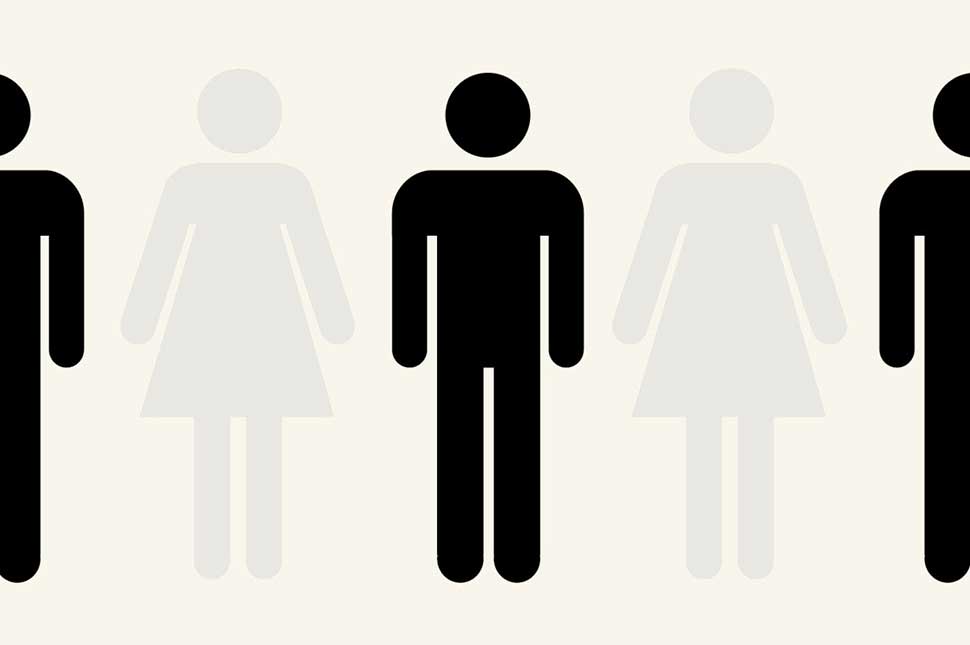
Biases in Machines
- 7 minsTable of Contents:
Introduction
Tune in as I take you through a flashback, relating human understanding with machine-learnt biases. Weird to say that You read this, but You don’t. It’s your conscience reading this without budging your mouth.
How and when did we learn this incredible ability? And what exactly did we learn?
This brings me to a fundamental concept of learning. How do we incorporate knowledge, and more importantly, how can we make machines incapacitate that knowledge?
Quick Flashback
You go to school, probably 1st or 2nd class; you have an English period, the teacher starts with writing strange characters on the blackboard; starts saying A for Apple, B for Ball.
Teacher relates those characters with an object, which is concrete/universal. An Apple will always be an Apple right?
You start relating random combinations of letters together, and learn about words, which somehow make a lot of sense.
But how? What happens within our brain?
Instead of this, there’s a more interesting question - How can a machine understand the same way we do? For this, we need a proper structure to represent a word to a machine; after all, it just understands 0 and 1.
Representing Words
What’s the closest thing to binary? Whole numbers. They are discrete but have no limits. They can be extended as much as there are words in a language.
So imagine you represent a word with a number, let’s say, Apple can be represented by 1, Ball by 2, and so on.
What would a machine do? Let’s say it’ll try to remember these words by their numbers; whenever asked, it’d go and refer to that memory.
Clearly, using this representation has some flaws:
- Talking just about the English language, it adds a new word every 98 minutes. Memory is supposed to overflow some day.
- “I like reddish apples and yellowish ___.” - Fill in the blank. You know the answer, bananas. Easy, right? But not for a machine.
- These words would come under a single context umbrella, say types of fruits; if we assign random numbers to every word, their context information is lost.
We need a better representation. Instead of assigning just a single number, how about if we assign arrays of numbers to words? Imagine an array of 2 dimensions:
X-axis - 'type of fruit'
Y-axis - 'type of color'

| Quadrants | Description |
|---|---|
| Q1 | (apple-like fruit, reddish color) |
| Q2 | (banana-like fruit, reddish color) |
| Q3 | (banana-like fruit, yellowish color) |
| Q4 | (apple-like fruit, yellowish color) |
Things are getting simpler now (we now know how to place an Apple, and a Banana in this coordinate space), now the machine has the contextual information that Apple is reddish and more apple-like, and Banana is yellowish and more banana-like.
Yet again, there are some assumptions/limitations: In this example, the properties used in the context were just ‘type of color’ and ‘type of fruit’. We need a lot of properties to define a word semantic.
More context <-> More dimensions
Every dimension would yield information about one of the properties of that word.
But do we really need to know which dimension relates to which property? Can we not just abstract it as just some property?
Word Embeddings
Imagine a 100 dimensions to represent a single word! This would slightly solve addition-of-new-words problem too.
If grapes were a new word, we could take some semantic properties from already-learnt words like apple as they both fall under a ‘type of fruit’.
This is inspired a lot from human understanding.
Remember the English class?
Teacher related letters/words to real-life objects. In a nutshell, we were learning what a machine would learn - the actual numbers which would fit in the n-dimensional representation.
We’ve established that Word Embeddings are an excellent way to represent a word in a machine (at least for now, at least for us), so that it may understand its semantic properties. But, how can we impute the actual values in n-dimensional arrays for words? To learn these embeddings, there are several techniques, several architectures. But rather than the methods, we’ll look at something which is typical for all the techniques, all the approaches.
The Data.
The Problem
For most machine learning algorithms, we need training data. In this context, it’s textual: any/all historical documentation, manuscripts, literature.
Any textual data can be used in training/imputing values to those n-dimensional arrays.
But here’s the catch: Data is imperfect.
How did we come to this conclusion? Let’s say we learnt the embeddings for every word there is; we can confirm this inferring the captured semantic information like:
King — Man + Woman = Queen
This gives us a green signal that we successfully captured the context. Right? But here’s where things go wrong:
Programmer — Man + Woman = HomeMaker
Theoretically, machine learning algorithms did their job remarkably by learning the properties and context of words from existing textual data. The term “homemaker” appeared more frequently with the pronoun “she” than with “he” or “others”, so it was more closely associated with female-ness than male-ness.
Even if the learning process was fair, the end outcome, however, was not.
Revisit the class: Remember when the teacher related those characters/words with objects, which are universal?
What if the ‘objects’ are not universal? What if they’re abstract, and have a different meaning for every conscience? That is where data imperfection roots in.
Let’s see another example:
“There are _ days in a week.”
> 7, as simple as that. But here’s when it gets tricky:
“There are _ genders.” - ??
What would an ML algorithm fill in the blank?
This highly depends on the type of data the algorithm was trained on; if it was trained just on historical data, there’s a high probability that it’ll fill an invalid number in the blank. To back up my assumption, take a look at this sentence from the 4th-century literature:
“You shall not lie with a male as with a woman; it is an abomination.” — Torah / Bible, Book of Leviticus, Chapter 18, Verses 22
Doesn’t sound so good in 21st century, with such a content-aware environment, does it? Now imagine a machine, learning from this (not so perfect) literature.
Clearly, there’s an induced Bias in Machine, where it learnt to discriminate based on race, colour, sex, language, religion, political or other opinions, national or social origin, property, birth or other statuses such as disability, age, marital and family status, sexual orientation and gender identity, health status, place of residence, economic and social situation, without us intending it to.
Put something like this in a realtime utility, things can go horribly wrong.
Read about Amazon’s secret AI recruiting tool that showed bias against women
This is just one type of bias, which can result in discrimination based on prohibited legal terms. These problems are severe, especially now that there’s been a revolution around a lot of conceptual facts, which were previously anticipated to be ground truths.
Conclusion
How do we solve this? Do we come up with a teacher-student setup, wherein teacher model makes sure the student model doesn’t induce a bias? Or do we come up with a better representation of words for machines altogether?
It’s an open question, I don’t intend to take it up here.
Artificial Intelligence/Machine Learning has gained a lot of attention these last few years, but so has general understanding of normalization in society.
We talk and boast about no discrimination based on any grounds, but actually putting words into actions - by originating new ideas, by framing new approaches, all the while by taking this discussion under consideration; is probably one of the best approaches we developers/engineers/thinkers can take! :)